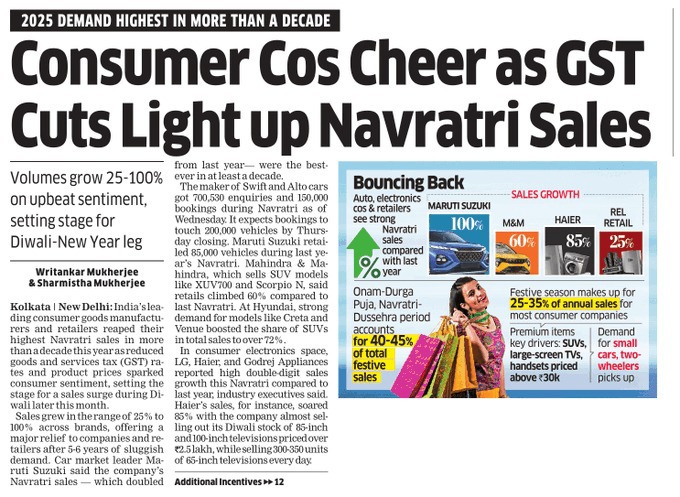
This Navratri, India didn’t just celebrate—it surged. With consumer demand hitting its highest in over a decade, the festive season became a case study in how policy can shape purchasing power.
📈 The Numbers Tell a Story
- Volume growth ranged from 25% to 100% across categories
- Smartphones above ₹30k, large-screen TVs, and washing machines led the charge
- Automotive sales soared, with Maruti Suzuki clocking over 70,000 SUVs and 135,000 Altos
- Brands like Samsung, LG, and Whirlpool posted double-digit growth
The common thread? GST rate cuts that made premium products more accessible and sentiment more buoyant.
🔍 Why This Matters
Festive seasons are emotional, but they’re also economic. When tax policy aligns with consumer behavior, the result is a compliance-led boom. GST isn’t just a backend formality—it’s a strategic lever that influences:
- Pricing psychology
- Inventory movement
- Platform performance (Amazon, Flipkart, Meesho)
- Consumer trust and return policies
💡 What Comes Next?
With Diwali and New Year around the corner, this momentum can be sustained—if brands act smart:
- Audit your GST structure: Are you leveraging the latest rate cuts?
- Refine your listings: Ensure HSN codes, MRP, and tax fields are editorial and error-free.
- Educate your audience: Use captions, reels, and product pages to highlight the value unlocked via compliance.
🪔 From Regulation to Revenue
Navratri 2025 proved that when compliance meets creativity, the market responds. This isn’t just a seasonal spike—it’s a blueprint for how policy, pricing, and presentation can work together to drive growth.
Let’s make Diwali not just brighter—but smarter.
